Roles played by supporters, players and officials in the Great War
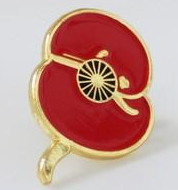
This is the first of a three part series based around Arsenal and World War One. Part two concentrates on club matters at home, and on 11 November details of those who paid the ultimate sacrifice.
Gunners at War: Those included below are by no means the full story of the Gunners at war, but a representative selection of those players who fought or worked on the home front. Additionally two chaps contacted us with details of their Arsenal supporting relatives’ military roles in the Great War.
Gooners’ family history
George William Spear
George Spear, an avid fan of The Arsenal at both the Manor Ground and Highbury enlisted into the Royal Army Service Corps in September 1914 at Woolwich. He served in France until late 1917 but was discharged in January 1918 owing to re-occurring Myalgia, receiving a pension gratuity and his medals. He started the family tradition of supporting the club and generations since have followed Arsenal. His great-great grandson currently has a seat in the Clock End and great-great-great granddaughter is a Junior Gunner.
Jasper Jackson
Jasper Jackson was living in Queensland Road, Holloway, almost at the spot where the Emirates Stadium is now located, when Arsenal moved to Highbury from Plumstead in 1913. A year later this Arsenal supporter was in France as part of the British Expeditionary Force, with the 2nd Middlesex Regiment, known as the ‘The Die Hards’, for which he obtained a 1914 Star – a medal awarded to those present at the front by 22 November 1914 . His passion for the club was passed down the generations, first to his children, whilst his grandson currently has a seat in the Clock End and his great-grandchildren regularly watch the Gunners.
Players War Roles
Military Medal won by Roose, Coleman and Buchan
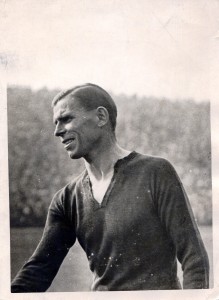
Charlie Buchan
During the First World War three ex-Arsenal players received the Military Medal, awarded for acts of bravery in battle. ‘Dick’ Roose, who played 13 games for the club between 1911-12, gained his when he first went into action in September 1916. Tim Coleman who played for the club between 1902 and 1908, won his near the end of the war in October 1918. Charlie Buchan who had appeared for the reserves in the 1909-10 season and had supported the team from the Plumstead terraces was awarded the MM in late 1917. He returned to Arsenal in 1925 as Herbert Chapman’s first buy.
Ernest “Joe” North MM
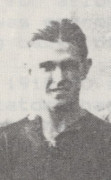
Joe North
Additionally, Joe North, a Gunner recruit after the war, won the Military Medal during the conflict. In World War 1 he joined up in 1915 initially in the Royal Engineers, he moved to the Machine Gun Corps and then became a Lieutenant in the nascent Tank Corps. North joined Arsenal from Sheffield United in October 1919, played 23 games at centre forward and left in May 1922. On the MCC ground staff he also played for Middlesex CCC.
Billy Milne DCM
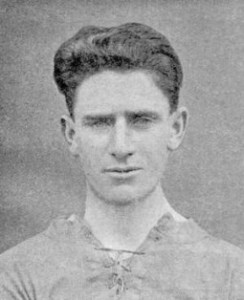
Billy Milne
Milne served with the Seaforth Highlanders in WW1 and on 3 September 1918 was awarded the Distinguished Conduct Medal (DCM) for “conspicuous gallantry and devotion to duty”. Corporal Milne rallied and organised a group of soldiers to hold off enemy attack, saving the wounded and covered the company withdrawal despite being bombed and under fire at all time. He joined Arsenal in September 1921 playing 124 games before retiring in 1927 to become reserve team trainer. A member of the Chapman boot room he remained at the club until 1960 spending much of his time with Tom Whittaker in various training roles.
Coleman died in war – false report
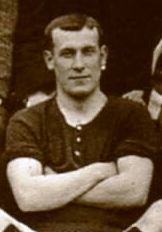
Tim Coleman
In February 1915 ex-Arsenal favourite Tim Coleman joined up with the Footballers’ Battalion. By the end of the year it was reported in many newspapers that he had been killed in action just before Christmas. His wife went to the War Office with the former Arsenal manager Phil Kelso, who was a good friend of Coleman, and they found no evidence of his death. A few days later confirmation was received that he was alive, well and in the trenches awaiting action.
Harold ‘Wally’ Hardinge
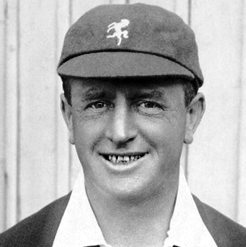
Wally Hardinge
Wally Hardinge, one of only 12 men who have played at full international level in football and cricket for England, joined Woolwich Arsenal in 1913. He joined up on 27 April 1915 and served as a Chief Petty Officer in the Royal Naval Air Service, which was effectively the air arm of the Navy. He returned to Highbury after the war, played until 1920 and then left in 1921 but continued playing cricket for Kent until 1933!
Andy Ducat
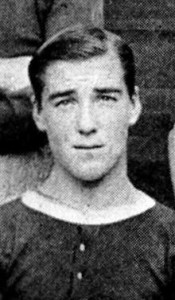
Andy Ducat
Owing to the logistical difficulties of fielding a team with many players either serving in action or engaged in other elements of the war effort, the clubs were allowed to field guest players. Probably the most skilled was Aston Villa’s Andy Ducat, and like Hardinge, one of only 12 men who have played at full international level in football and cricket for England, and formerly of Woolwich Arsenal between 1905 and 1912. He turned out 47 times as an Arsenal guest player during wartime football, while also serving in the Royal Garrison Artillery and attaining the rank of Sergeant.
Billy Blyth
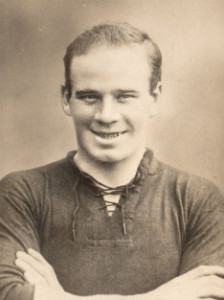
Billy Blyth
Blyth, from Dalkeith in Scotland, played 12 times for the Woolwich Arsenal first team in 1914-15. He joined the Royal Army Service Corps, who were in charge of Army logistics, moving supplies on roads by either horse, steam or motor vehicles, and by rail and water. He was in the Motorized Transport section. After the War he returned to the club amassing almost 350 first team games, and captained the team during his final season in 1928-29.
William Spittle
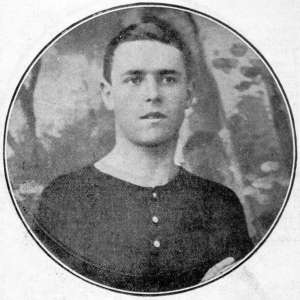
William Spittle
Billy Spittle played seven times for Woolwich Arsenal between 1913 and 1914 but was never on a winning team. He joined the Footballers’ Battalion, and played for their team scoring against the Royal Garrison Artillery in 1916. He was also in the squad for the Flanders Cup, an inter-battalion football competition that unsurprisingly the Footballers’ Battalion won in April 1916. While Spittle remained at Arsenal until October 1919 he did not play for the first team again.
Clement Voysey
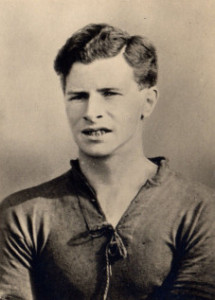
Clem Voysey
Conscripted into the Royal Naval Air Service on 5 June 1916, Voysey became a rigid airship mechanic on 10 December 1917 working with the R33, a British version of the Zeppelin. The R33 class of airships were built for the RNAS during WW1, but were not completed until after the end of hostilities. He made his Arsenal debut in the first League game after WW1 against Newcastle at Highbury and remained at the club until 1924.
Role of Ordnance – many players worked there for war effort
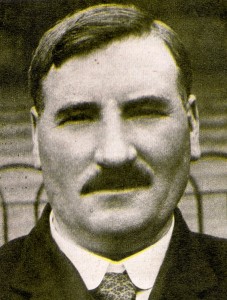
Phil Kelso
Many Arsenal players went to work at the Royal Arsenal Ordnance Factory during the war, serving the country in Plumstead making the munitions for the soldiers at the front. Joe Shaw, Jock Rutherford, George Grant, Angus McKinnon and Alfred Fletcher were all engaged there. As were John “Pat” Flanagan and Bob Benson, but sadly more of these two players later in the week. Former Woolwich Arsenal manager Phil Kelso, himself a trained engineer, also worked there during WW1. In July 1915 he arranged a London v Arsenal game at West Ham, where football professionals at the Arsenal factory took on other London-based footballers, with all proceeds going to a war charity.
Role of Punch
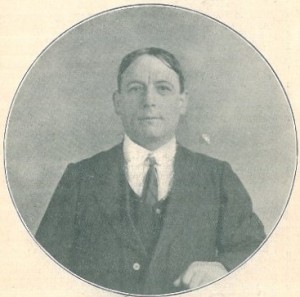
James “Punch” McEwen
In April 1915 James ‘Punch’ McEwen took charge of The Arsenal for the two final League games before the War halted the football programme. Football continued as entertainment for the home front but was not played competitively during the conflict. Arsenal were in the London Football Combination between 1915-19 with McEwen in charge of the playing side of the club and John Peters as administrative secretary. Both of these men were also doing ‘Government work’ in between their football duties. In April 1919 McEwen handed over the manager’s role to Leslie Knighton, and returned to looking after the youth players. Though later at the age of 49 he played in a couple of reserves matches in 1921!
About these items
The majority of these short items were written for the 2014 Centenary Commemoration of WW1 and most appeared in the Arsenal programme under the “Arsenal at War” title last season.
Apologies to the originator of the fantastic poppy image but we couldn’t locate who designed it to acknowledge as the source.
—————–
Don’t forget to subscribe to the blog (top right). You know it makes sense.
Or have a look at our other site: The Arsenal Collection for more Arsenal memorabilia.
Copies of our books Royal Arsenal – Champions of the South and Arsenal: The Complete Record 1886-2018 are still available from the publishers.
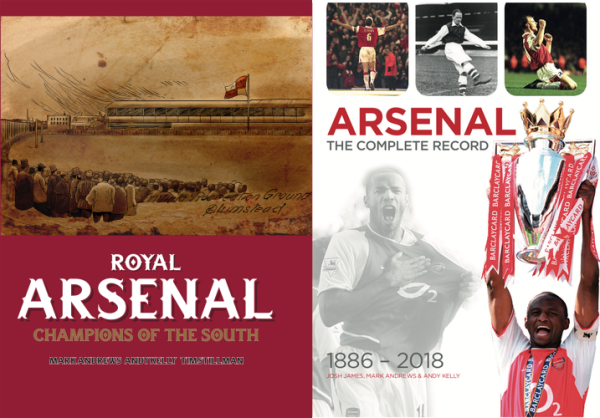

There is an excellent account of Tim Colemans life in a book entitled ” Fighting for football ” by George Myerson . In addition to his war exploits it also deals with his fights with the authorities , the first footballers strike and the forming of Outcasts FC .before he sadly died in relative obscurity .
Ken,
It’s a good account of Coleman but I think he came over as someone who just wanted to argue all the time and for the sake of it, rather than pick his fights.
Ironically after being declared dead in WW1, he died in WW2 in the Blitz clearing up bomb debris after a fall from a great height.
A huge thanks to your grandad Jasper and all who braved the war and a special thanks goes out to the original Gunners.
Jasper Jackson. My Grandad. Very proud to see this here.